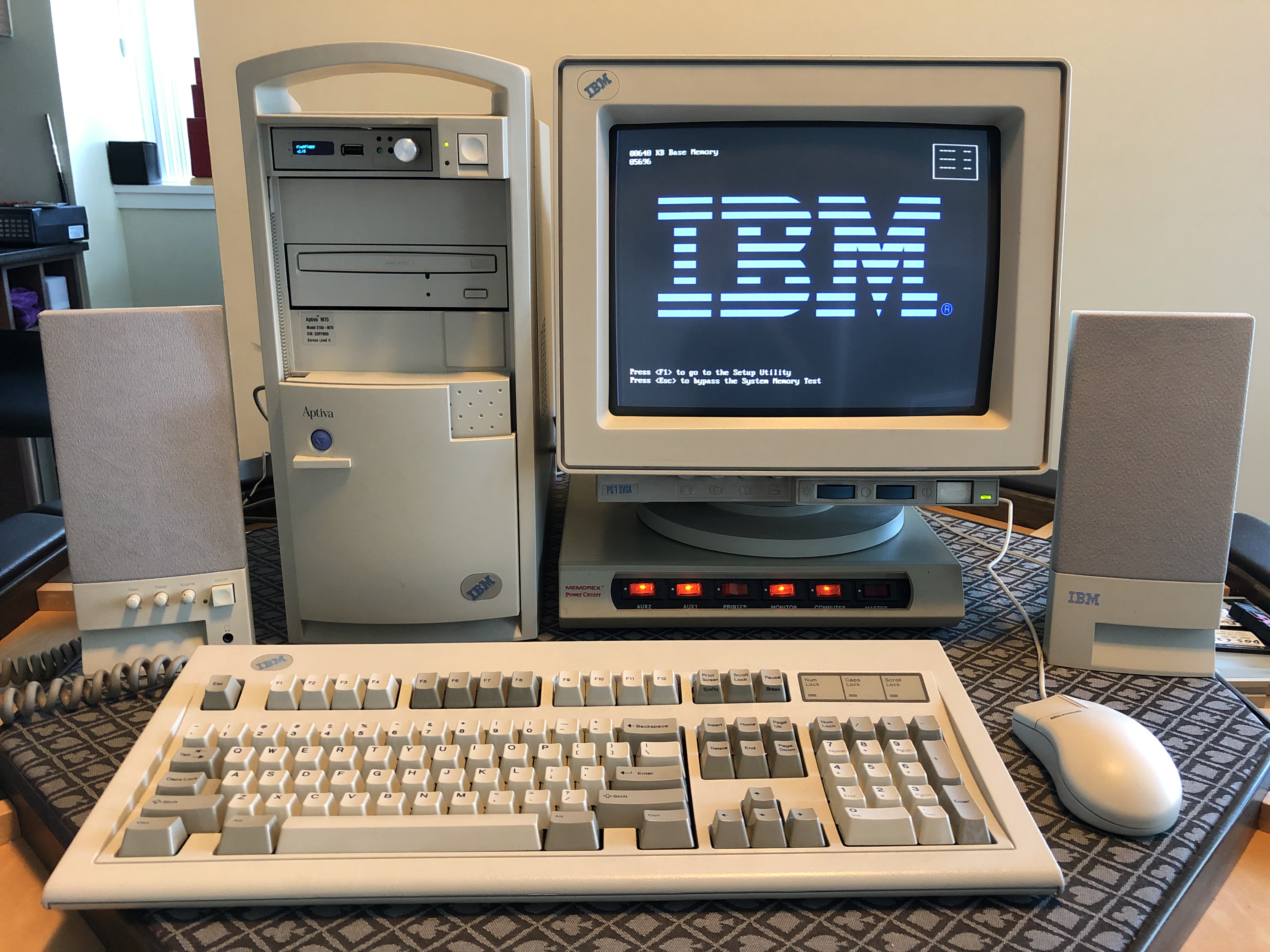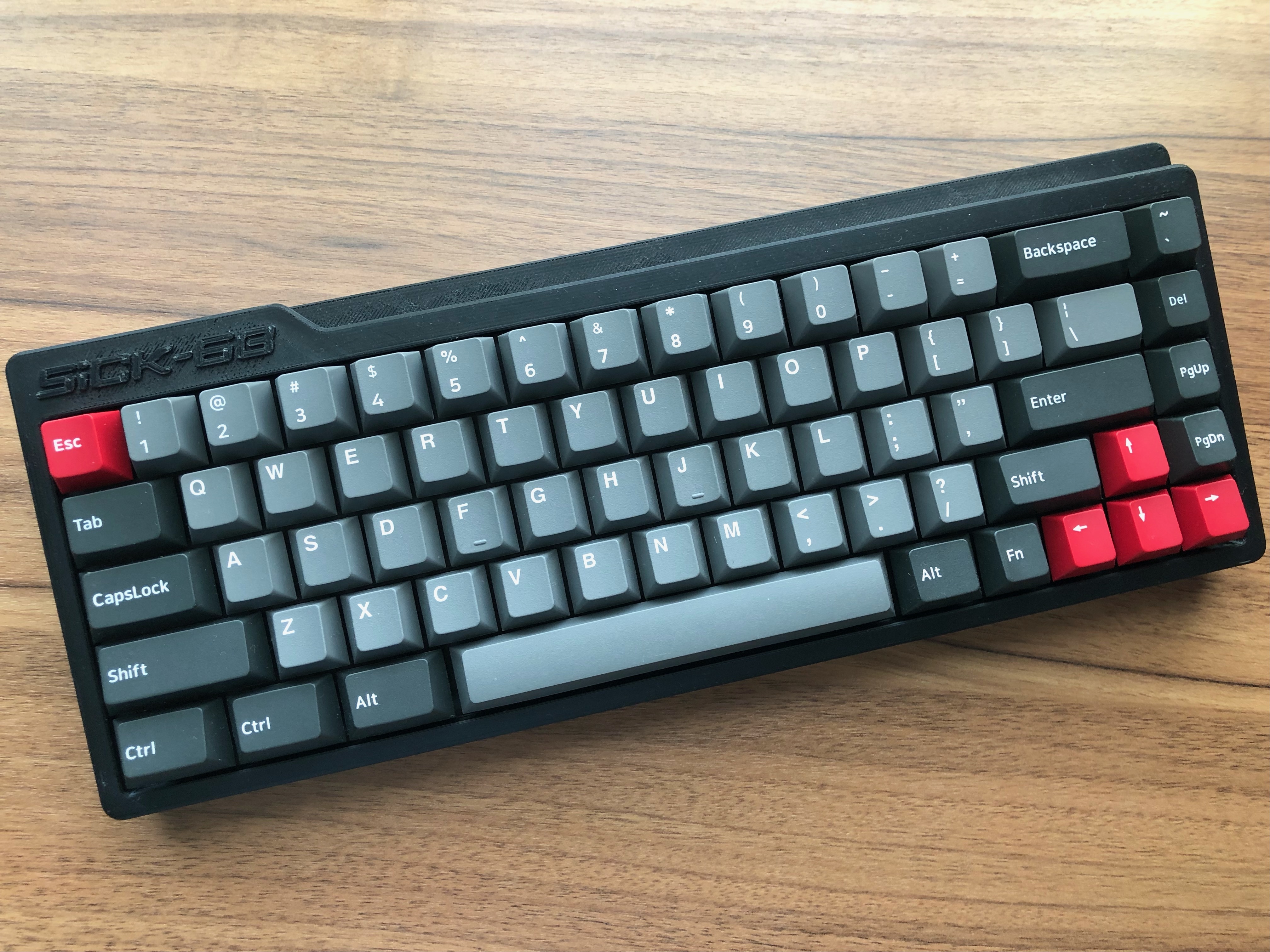Mechanical Keyboards

IBM Model M#
There’s not much to say here that hasn’t been explained elsewhere, but it’s important to remember that at one time it was nearly impossible to buy a new mechanical keyboard. In the late 90’s it looked like the only way to get that delicious clicky feeling was to carefully maintain your old Model M, and I did just that for decades. The future looked like a mushy, rubber-domed wasteland.
Razer Blackwidow Chroma#
I bought this after my employer asked me to go buy a new keyboard for my workstation. “Whatever you like,” they said, “expense it.” They regretted that decision after I brought this green keyswitch monstrosity back.
Originally I didn’t like it. The keys were closer together than the Model M which made it feel cramped. The sound of the “Razer Green” switches were satisfying though, much to the annoyance of my coworkers. Over time I started to like it more than the Model M, mostly because the travel distance was shorter which resulted in faster typing.
I ended up using this one for about a decade before the keys started becoming too mushy. It’s possible I might be able to desolder the switches and replace them. The keyboard itself still works fine, but for now it sits on the shelf.
Sick-68#

A hand-wired experimental keyboard. I wanted to try:
- How a 65% keyboard would feel compared to full-size,
- Whether a 3D-printed case could perform,
- Having 3x 1.5U keys to the left of the spacebar, and
- How authentic Cherry MX Blue switches felt.
Economically speaking, this keyboard makes no sense. It’s cheaper to buy something similar off the shelf. But as an experimental keyboard I learned a lot:
Typing on a 65% keyboard wasn’t as annoying as I thought it was going to be. I started to enjoy the small layout very quickly and didn’t miss the numpad as much as I thought I would. A keyboard of this size is perfect for travel, server closet, media center, etc.
The 3D printed case felt sturdy and rigid. I thought it would feel cheap, “plasticy”, or flex under the weight. None of that happened. It was printed with PVC so that might have something to do with it. I didn’t experiment with any other filaments so I have nothing to compare it with.
The extra-sized keys to the left of the spacebar were perfect for my typing style. I tend to hit the spacebar with my left thumb below the ‘V’ key, and with most spacebars starting below the ‘X’, that’s a lot of wasted space. The middle key being used as ‘function’ to change the keyboard layer was perfect.
This is a layout nobody else uses so I don’t think I’ll find it anywhere, but it was fun to build something custom. You can download the .hex firmware I used here.
Cherry MX Blue are my favourite switches. No need to repeat the reviews online ad nauseam, although I’m a little surprised it took me this long to give them a try. They’re fantastic.
Daeru EK1280#
A cheap $40 keyboard with “Daeru Blue” switches. It feels cheap to type on, that’s for sure, the keycaps feel a bit loose and chunky. The switches sound good though. For a budget/emergency keyboard it’s actually not bad.
Corsair K70#
This thing’s pretty good! It uses cherry blue switches and it’s been going for a few years now. Not much else to say. No complaints.
The Future#
I plan on building something from off the shelf parts. The amount of selection mechanical keyboard enthusiasts have these days is outstanding. So far my requirements are:
- Full size layout,
- Hot-swap PCB,
- Cherry MX Blue switches.